Gallery opened: July 2004
Updated: 19 Nov 2024
More on The Motor Sleigh Of Grand Duke Cyril added




Propeller-Driven Sleighs |
Gallery opened: July 2004 |
THE SIKORSKY SLEDS
Igor Sikorsky is famous for his pivotal role in developing a practical helicopter, but years before this he built a rather more specialised form of transport. He produced not one but two propeller-driven sleighs when he was only twenty.
In late 1909 and early 1910, and after, Igor Ivanovitch Sikorsky and two or three passengers would drive at high speed around the snowy streets of Kiev in a sleigh driven by a rear-mounted engine and propeller. It all sounds highly dangerous to pedestrians, but perhaps you could get away with that sort of thing in pre-revolutionary Russia if you had the right rank. Sikorsky's motives were not mere joyriding; he was studying engine-propeller combinations in preparation for aircraft design.
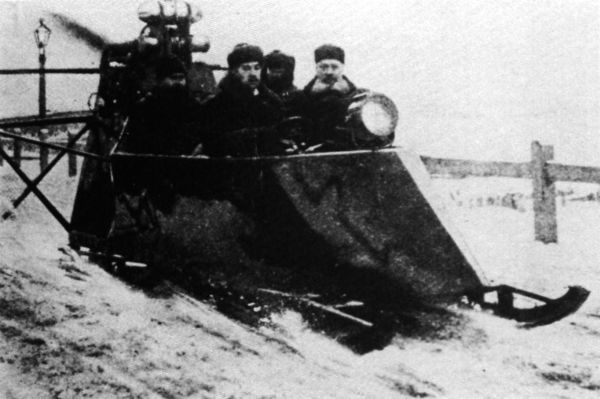 | Left: A Sikorsky Propeller-Driven Sleigh in 1912.
|
Few mechanical details of these machines are known. Steering was presumably through swivelling front skis, and the dark framework to the left of the picture appears to be a rudimentary propeller-guard. Its main function was probably to protect the propeller blades if the machine turned over.
At least three different engines were tried on the sleighs; the last two are known to have been 15 and 25 horsepower motorcycle engines.
Sikorsky attempted to make a helicopter in 1910, but like his contemporaries found the control and stability problems to be too great. By 1913 he had built the world's first four-engined aeroplane, the 9000-pound Bolshoi-Baltisky, but it was not until 1938 that he returned to the work on helicopters which is his greatest claim to fame.
THE MOTOR SLEIGH OF GRAND DUKE CYRIL

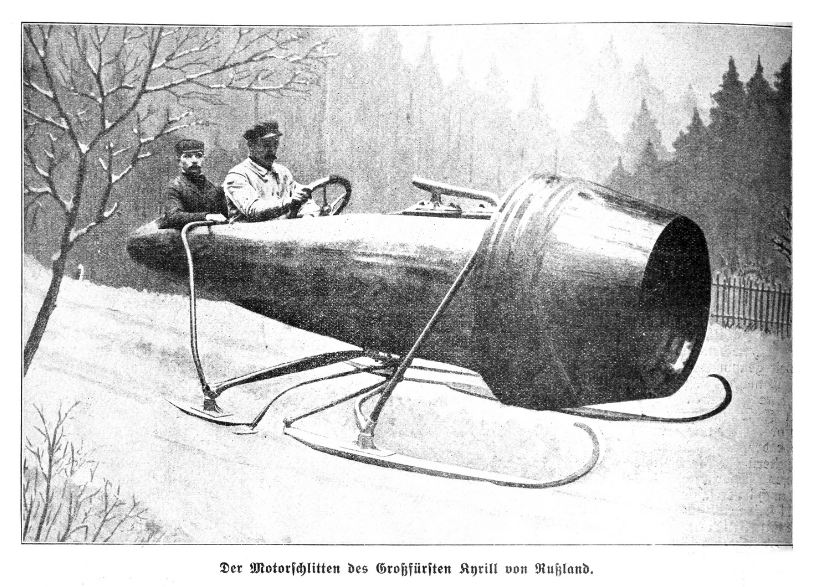 | Left: The Motor Sleigh of Henri Coanda and Grand Duke Cyril: 1910
|
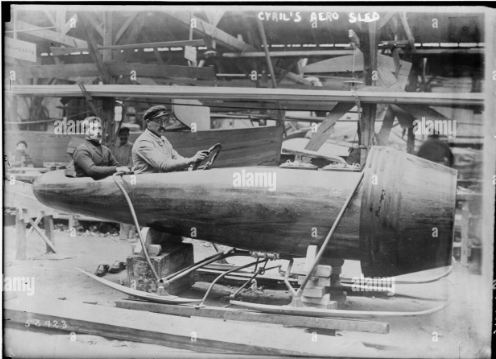 | Left: The Motor Sleigh of Henri Coanda and Grand Duke Cyril: 1910
|
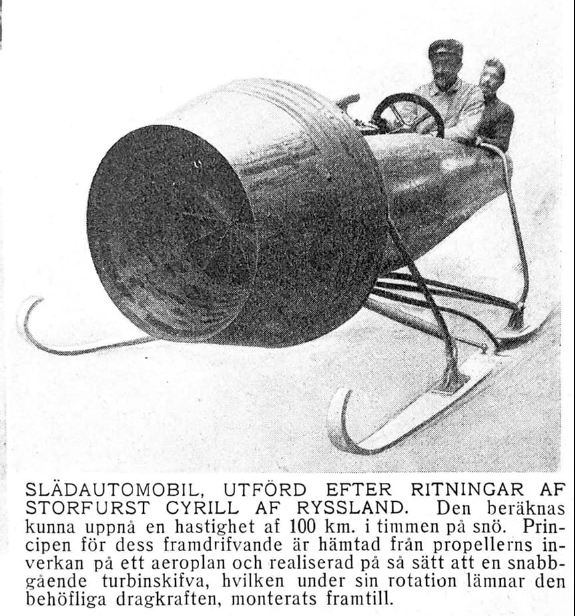 | Left: The Motor Sleigh of Henri Coanda and Grand Duke Cyril: 1910
|

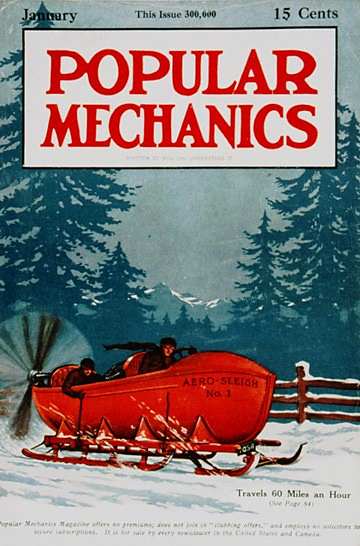 | Left: A Propeller-Driven Sleigh on the cover of Popular Science in 1912
|

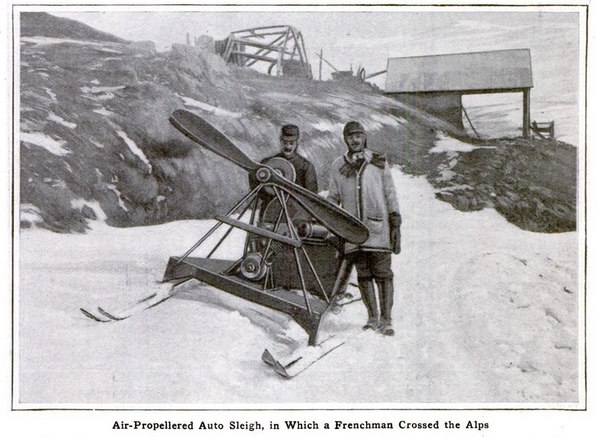 | Left: French Propeller-Driven Sleigh: 1914
|
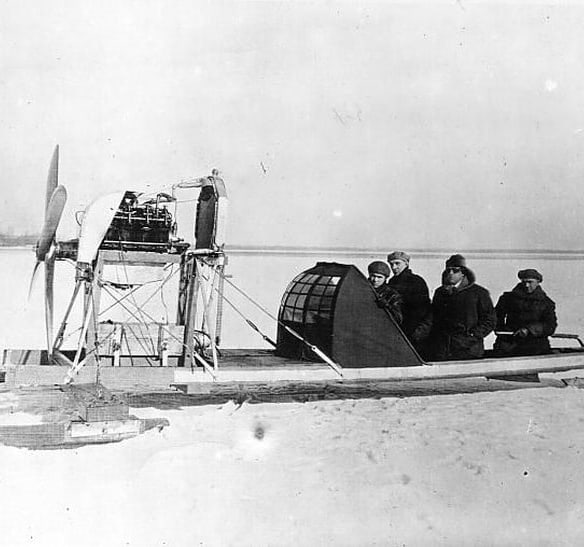 | Left: Unknown Propeller-Driven Sleigh: 19??
|
CANADIAN PROP-SLEIGH
A Canadian prop-sleigh was built by 15-year-old Armand Bombardier in Valcourt, Quebec in 1922.
It was powered by the engine from a Model T Ford, and had a frame with four ski runners. The front runners were steered by a rope, and the engine was mounted at the rear, driving a hand-carved wooden propellor. There was a single seat at the front. It made its first (and possibly last) trial run in December 1922.
RUSSIAN PROP-SLEIGHS
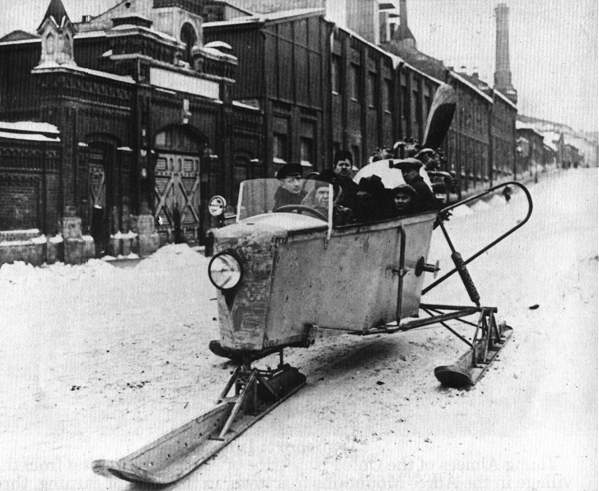 | Left: An aerosled in Russia: 1919
|
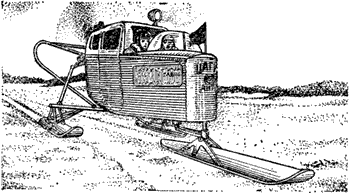 | Left: An ANT-IV aerosled: introduced 1924.
|
AMERICAN TWO-PROP SLEIGH
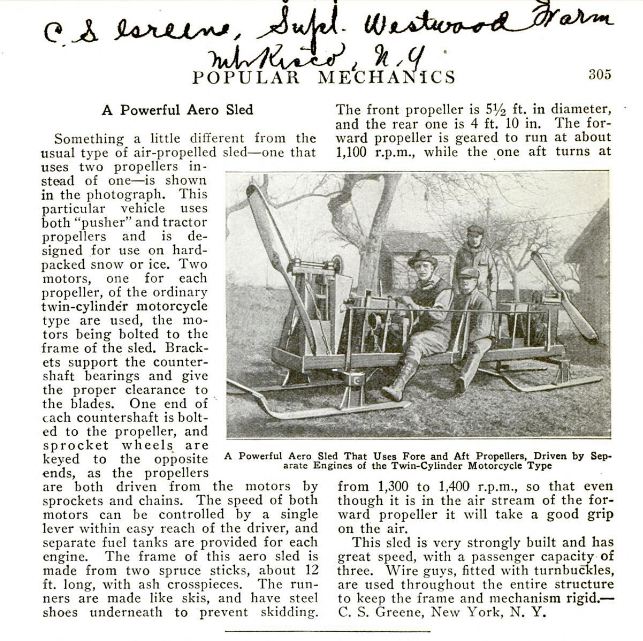 | Left: Two-prop sleigh in America: 1922
|
THE RUSSIAN MILITARY AEROSLEDS
Prop-sleighs were actually used in by the Soviet Army; they were normally called "aerosleds". The Red Army had several aerosled detachments that were employed with some success in winter operations against the Finns during the Winter War. They were also used in fighting the Germans in the severe winter of 1941/42, giving the Russians a significant advantage in mobility on deep snow.
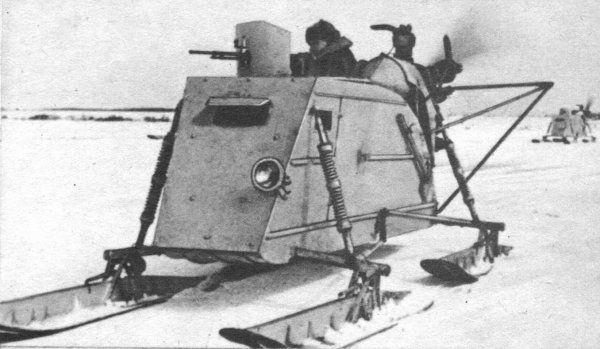
| Left: A NKL-26 Russian military aerosled.
|
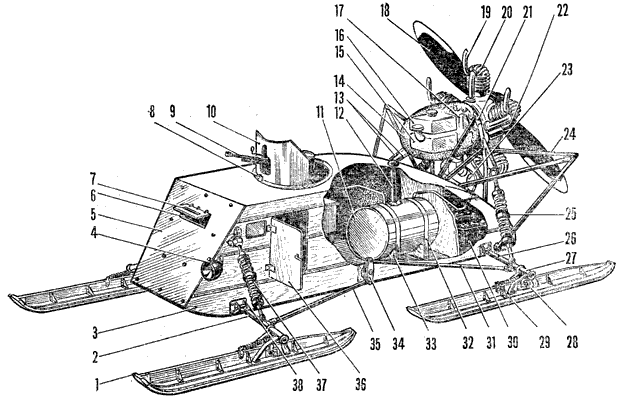
| Left: Diagram of the NKL-26 Russian military aerosled.
|
The Russian aerosleds were used primarily for maintaining communications between units and formations, and moving ammunition, rations, and petroleum products to forces operating away from their supply bases. The aerosleds also evacuated the wounded from the battlefield. Sometimes aerosled detachments were used on combat missions, launching surprise attacks against the enemy.
Much of the information on Russian aerosleds is from the amazing website of V Chobitok; who I have been unable to contact to ask permission. (Mr Chobitok, if you see this please contact me) See: Aerosleds Last accessed May 2013.
I'm afraid the Chobitok site is entirely in Russian. The five lines at the top with black bullet points are links leading to detailed descriptions of various models of aerosled, complete with mechanical drawings. Not to be missed.
THE RUSSIAN POST OFFICE
Research on this machine is at an early stage (not helped by the language barrier) but this is apparently a post office delivery aerosled, called "The North".
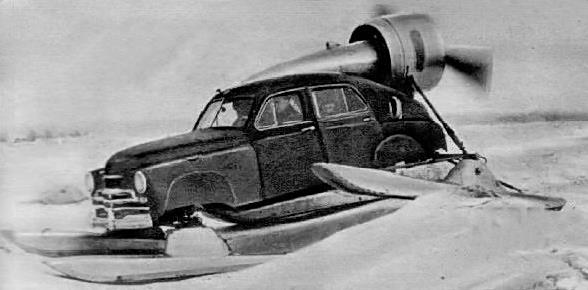
| Left: Russian post office delivery vehicle
|
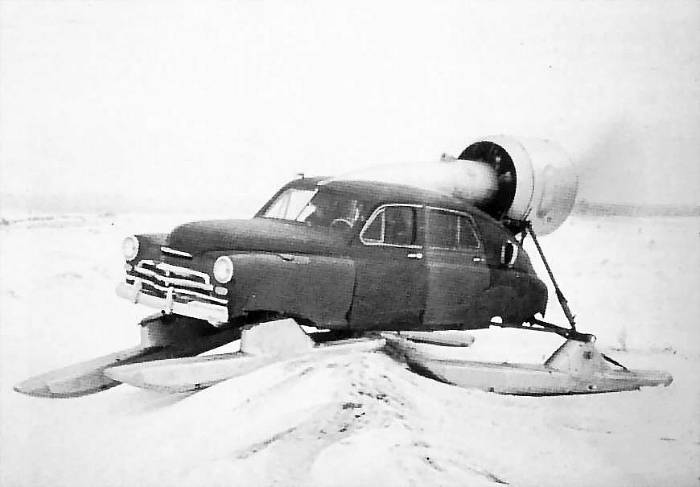
| Left: Russian post office delivery vehicle
|
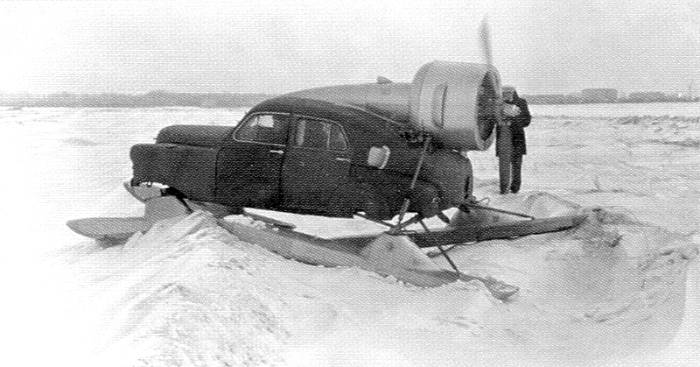
| Left: Russian post office delivery vehicle
|
RUSSIAN PROP-SLEIGH LINKS
For obvious climatic reasons much of the information on prop-sleighs comes from Russia.
Many pictures of the Soviet Post Office delivery vehicle shown above, apparently called "The North":
gaz20.spb.ru/modif_exotic_sever2.htm
More photos of "The North", including one that seems to have been converted back to wheels:
yaplakal.com/forum11/topic209434.html
A small prototype built by a former IMZ-Ural engineer. It can run on either floats for water or skis for snow:
aerokat.newmail.ru/index.htm
A site for samodel'nie (literally self-made) homemade airsleds, including some mechanical drawings:
aerosani.masteraero.ru/sani-23.php
Be aware that these are all Russian sites and the text is exclusively in Russian. However Google Translate deals with it very well.
OTHER PROPELLOR-DRIVEN LAND TRANSPORT
The Museum of RetroTech has many other propellor-driven exhibits:
There is the propellor-driven motorcycle
And of course the propellor-driven car
And the Museum Governing Committee are planning a gallery on propellor locomotives. You heard it here first.

  
|